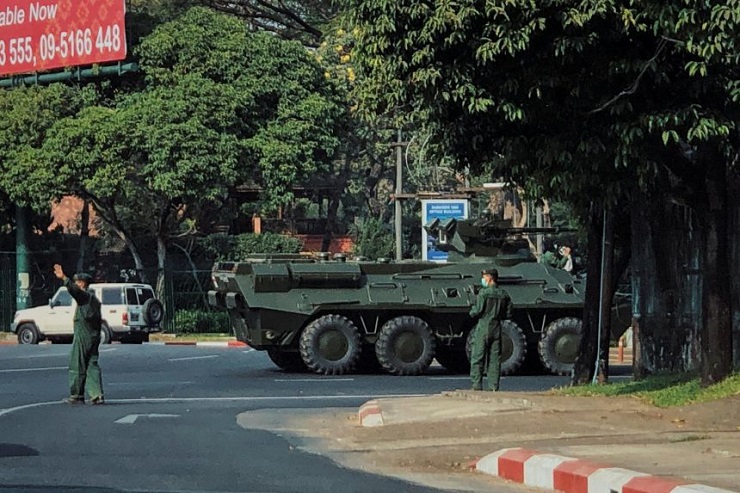Headlines are abuzz with the military in Myanmar announcing that it would be taking power for a year, citing electoral irregularities that saw a landslide victory for the nation’s defacto leader Aung San Suu Kyi and her National League for Democracy political party.
Western analysts have wavered between accusing the US and China of being behind the coup. Of course there is another possibility, that neither was.
Aung San Suu Kyi’s Government Was Installed with US-Backing
In reality, Aung San Suu Kyi’s accession to power was the result of decades of US funding and political support, both for her and her party as well as for a gargantuan network of parallel institutions funded by the US government through the National Endowment for Democracy (NED).
The US NED’s website lists some 80 programs admittedly being funded by the US government in Myanmar. There are also programs, organizations, individuals and movements that are not listed but are still receiving US government money.
These groups span the spectrum of sociopolitical activity, from human rights fronts to legal organizations, to media operations and environmental policy advocates.
Despite the variety of activities the US is funding in Myanmar, they all serve several common purposes.
First, they serve to buttress Aung San Suu Kyi and her NLD party.
Second, they serve a much wider agenda of attacking, undermining and reversing cooperation between Myanmar and China both directly and indirectly.
Direct activities include entire organizations dedicated to opposing specific projects like dam construction, pipelines, ports and transportation infrastructure.
Indirect activities include the fueling of separatism which in turn creates instability and security threats that slow or altogether stop the construction of projects by Chinese companies or halts the operations of Chinese-owned mines.
Examples of this includes the Ronhingya crisis in Rakhine state where China seeks to build the Kyaukphyu deep-sea port, a key component of its wider regional One Belt, One Road initiative.
Instability along Myanmar’s border with China owed to armed separatist movements are deliberately exasperated by US-funded media organizations and “human rights” groups which lopsidedly report on government “abuses” while portraying the armed militants as victims, not unlike US-backed “rights” groups have done in places like Syria.
Righting a Wrong?
While Aung San Suu Kyi’s government since 2015 has appeared more than willing to work with China, likely because Myanmar could not afford not to, the fact remained that Aung San Suu Kyi and her NLD party depended almost entirely on Western support and thus ultimately reflect Western interests rather than Myanmar’s.
Coupled with the fact that the immense parallel institutions built up by the US government through the US NED in Myanmar made it virtually impossible for opponents of the NLD to compete in elections most certainly impacted by foreign interference may have been the final straw that triggered Myanmar’s military to pull the plug on the NLD-led government.
What Comes Next?
It is unclear what the military will do in the following days, weeks and months ahead.
Just one day after the military took power, US-funded opposition groups took to the streets in neighboring Thailand.
The White House also responded with a statement claiming:
The United States opposes any attempt to alter the outcome of recent elections or impede Myanmar’s democratic transition, and will take action against those responsible if these steps are not reversed.
This statement sounds even more urgent when keeping in mind the decades and tens of millions of dollars the US has spent on that “democratic transition” and the political party and networks Washington created in Myanmar to emerge out the other side of that “transition.”
Just as we saw with the unrest in Hong Kong and Thailand in 2019 and 2020, the US will likely attempt to create synergies between the still ongoing unrest in Thailand and now Myanmar.
If and when protests take to the streets in Myanmar violence is almost certain to follow.
The Western media will likely forget the last several years of exposing Aung San Suu Kyi’s followers as violent and prone to ethnic attacks and once again portray them as “pro-democracy” protesters being “victimized” by a “brutal military dictatorship.”
The military’s seizing of power and the foreign interference that likely prompted it bodes ill for not only Myanmar so early in 2021, but also for neighboring Thailand and possibly elsewhere in ASEAN.
US foreign policy appears on track to continue ratcheting up pressure and conflict with China not only directly but all along its peripheries with brush fires already starting in Southeast Asia.
Joseph Thomas is chief editor of Thailand-based geopolitical journal, The New Atlas and contributor to the online magazine “New Eastern Outlook”.
